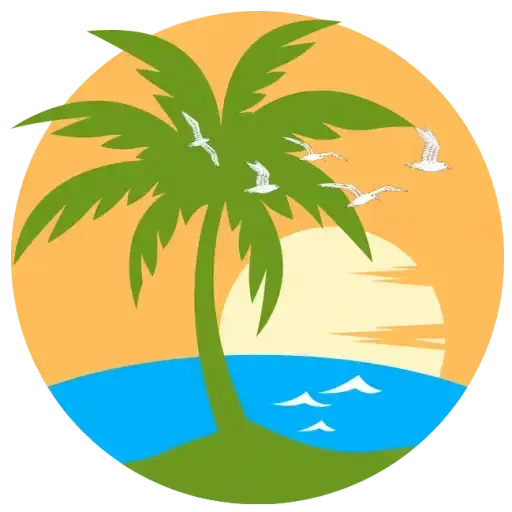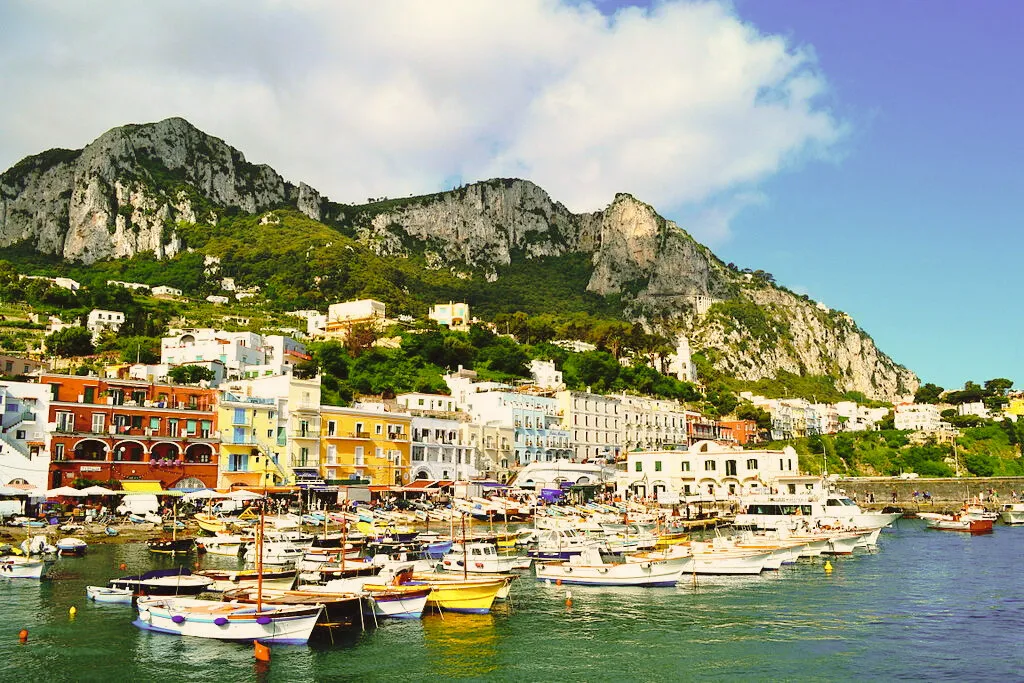Capri is an island in Italy, found in the Tyrrhenian Sea near the Sorrento Peninsula. It’s on the south side of the Gulf of Naples. The biggest town on the island is also called Capri. Tourists have been going there for vacations since a long time ago, even when the Roman Republic was around.
The island has some cool things to see, like a small harbor called Marina Piccola, a high walkway with nice views called Via Krupp, big rocks that stick out of the sea called sea stacks or faraglioni, another town called Anacapri, a pretty blue cave in the water called Blue Grotto, old Roman houses that are mostly ruins now, and views of different towns nearby like Positano, Amalfi, Ravello, Sorrento, Nerano, and Naples.
History
Geological Formation
Capri is a part of the edge of a wide rocky area in the ocean called the Campania-Lucania platform. This rocky area extends from a place called Lepini Mountains in Italy to the Calabrian Pollino Nature Reserve. The shape of the land we see today was made around 40-50 million years ago.
Long ago, all the islands were connected as one piece of land under the water. The Campania-Lucania platform was also under the water’s surface. It helped in making Capri. From a time called Langhian to upper Pliocene, the land went through changes because of movements in the Earth’s crust. This made Capri connect to the Sorrentine Peninsula by a thin strip of land.
Because of this connection, big animals could come to Capri. After that, Capri went underwater for a while. The rocks that make up Capri are very old, from the Jurassic and Cretaceous times, around 65 to 190 million years ago. The oldest places on Capri are Cala Ventroso, Grotta delle Felci, and the Migliera. Capri now looks like two big rocky parts, Capo on the East and Solaro on the West, with a deep area in the middle where the town is built.
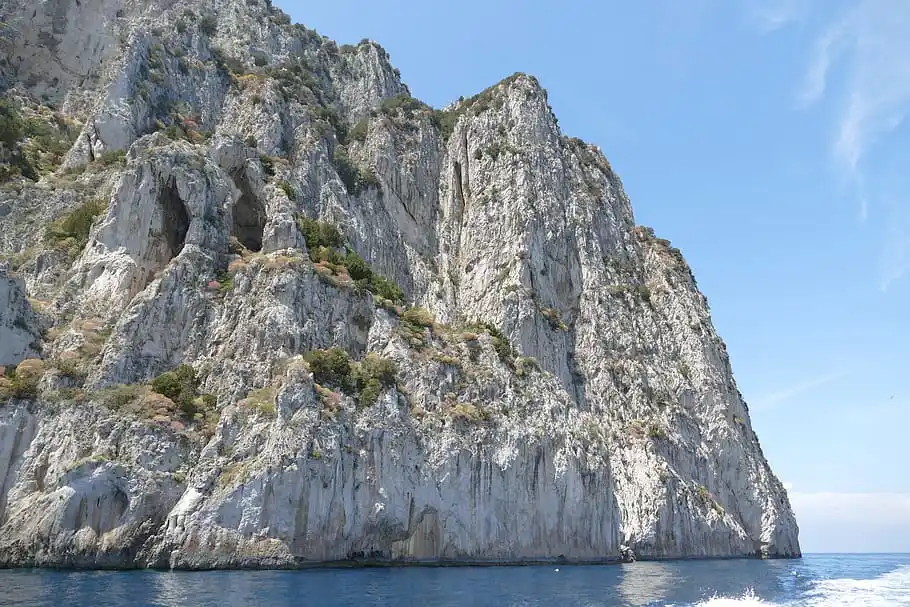
Roman Empire
Emperor Augustus found Capri a long time ago during the Roman Empire. He liked it a lot and built structures there, like temples and villas. But even before Augustus, people lived on the island. The Greeks lived there from around 8th century BC. They made steps connecting Marina Grande and Anacapri, which were later used by the Greeks. Augustus got Capri by giving away another island.
Augustus is not entirely to blame. He actually helped us know about Capri’s past by protecting old structures. Romans found evidence of old people living there, and Augustus showed these things in his garden. They found stone weapons, big bones, and remains of animals that lived long before the Romans. Augustus cared about these remains a lot and even made a museum for them.
Today, we know that Augustus’s villa and the island’s history go back to really ancient times, like the Neolithic period and the Bronze Age. It’s amazing that we can trace the island’s history to around 12,000 years ago. The Neolithic period was when people started farming, and that’s why we find so many animal remains. Capri’s name might come from the animals that lived there. The Romans called it the “goat island” because of the goats. This shows that the island had lots of animals because of farming.
During the time of the Roman Empire, many buildings were built on the island of Capri. These old buildings could still be seen in the 1800s. They help us learn about the island and the people who lived there. There were many old cisterns, which held rainwater for the island because there were no natural springs. Back then, people relied on rain for water. But later, in 1978, a project brought fresh water from the mainland using an undersea pipe. This was likely done because more tourists were coming to the island.
After Augustus, Tiberius took over the island. He built twelve villas on Capri. Tiberius lived on the island for ten years. One of his villas was Villa Jovis, in a secret place on the island. Tiberius stayed in the hard-to-reach part of the villa, guarded heavily. Even with all this protection, there are rumors about his death. Some say he was poisoned or smothered. He died when he was 77 years old.
Other emperors didn’t visit the island much. We only know of it being used as a place of punishment for the wife and sister of Emperor Commodus.
Getting to Capri, Italy
Getting to Capri, Italy, typically involves a combination of transportation modes. Capri is an island located in the Bay of Naples, and the main access points are from Naples or Sorrento on the mainland. Here’s how you can get to Capri:
1. By Air to Naples Airport:
The nearest airport to Capri is Naples International Airport (NAP). If you are coming from abroad or another city in Italy, you can fly to Naples and then proceed to Capri.
2. By Train to Naples Centrale:
If you are already in Italy, you can take a train to Naples Centrale, the main train station in Naples. From there, you’ll need to continue your journey to the port.
3. By Ferry from Naples:
From Naples, head to the Port of Naples (Molo Beverello or Calata di Massa). There are several ferry companies that operate frequent services between Naples and Capri. The ferry ride takes around 40 minutes to 1 hour, depending on the type of ferry.
4. By Ferry from Sorrento:
Alternatively, you can take a ferry from Sorrento to Capri. Sorrento is closer to the island than Naples, and the ferry journey takes around 20-40 minutes.
5. Private Boat or Water Taxi:
If you prefer a more private and direct option, you can hire a private boat or water taxi to take you from Naples, Sorrento, or other nearby coastal towns directly to Capri.
Keep in mind that transportation schedules and availability may vary depending on the season, so it’s a good idea to check and book your tickets in advance, especially during peak tourist periods.
Map of Top Attraction in Capri
Top 10 Attractions in Capri
Capri is a stunning island in the Bay of Naples, Italy, known for its natural beauty, glamorous atmosphere, and historical significance. Here are some of the top attractions on the island of Capri:

1. Blue Grotto (Grotta Azzurra)
The Blue Grotto (Grotta Azzurra) is an amazing sea cave on the coast of the island Renowned for its azure-blue waters, this natural wonder has drawn visitors for centuries. Sunlight filtering through an underwater cavity creates an enchanting blue reflection that illuminates the cavern. Accessible by small boats, visitors are treated to a surreal experience as they enter the cave’s narrow mouth. The play of light and water produces an otherworldly ambiance, making the Blue Grotto a must-see attraction. Its ethereal beauty has inspired poets, artists, and travelers, solidifying its status as an icon of Capri’s breathtaking coastal landscape.
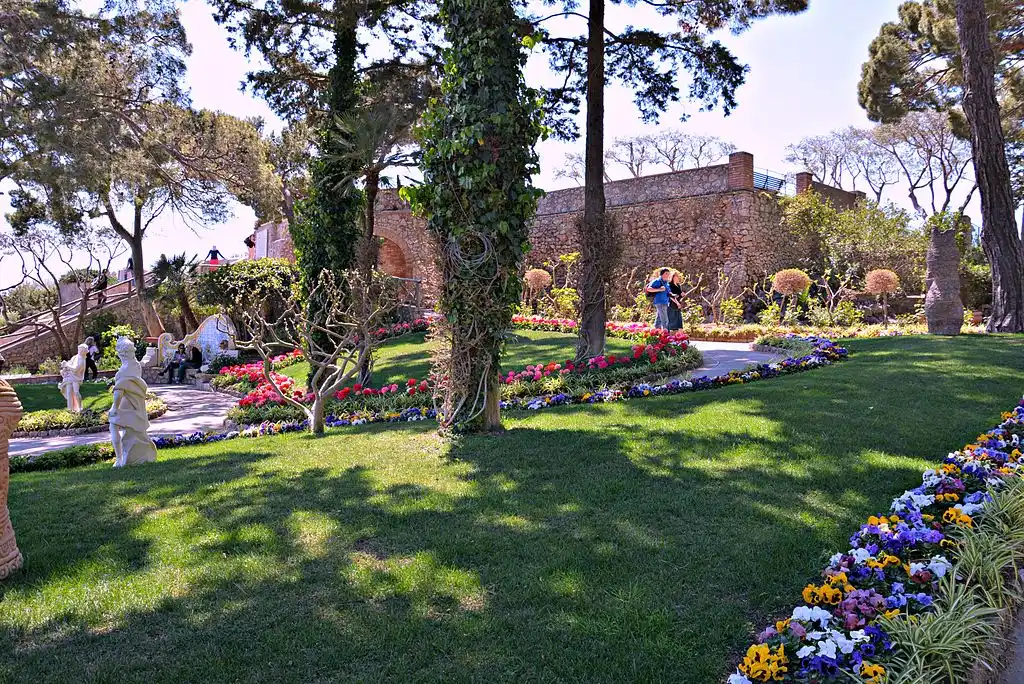
2. Gardens of Augustus (Giardini di Augusto)
The Gardens of Augustus (Giardini di Augusto) grace this scenic island, offering a verdant retreat with sweeping vistas. Overlooking the azure sea, these terraced gardens present a harmonious blend of lush foliage and dramatic coastline. The carefully landscaped pathways wind gracefully amidst vibrant flora, framing breathtaking panoramas of the Tyrrhenian Sea and the iconic Faraglioni rock formations. Originally cultivated by German industrialist Friedrich Alfred Krupp, the gardens stand as a testament to human creativity harmonizing with nature’s grandeur. The Gardens of Augustus provide a serene sanctuary for visitors to immerse themselves in the island’s remarkable natural beauty.
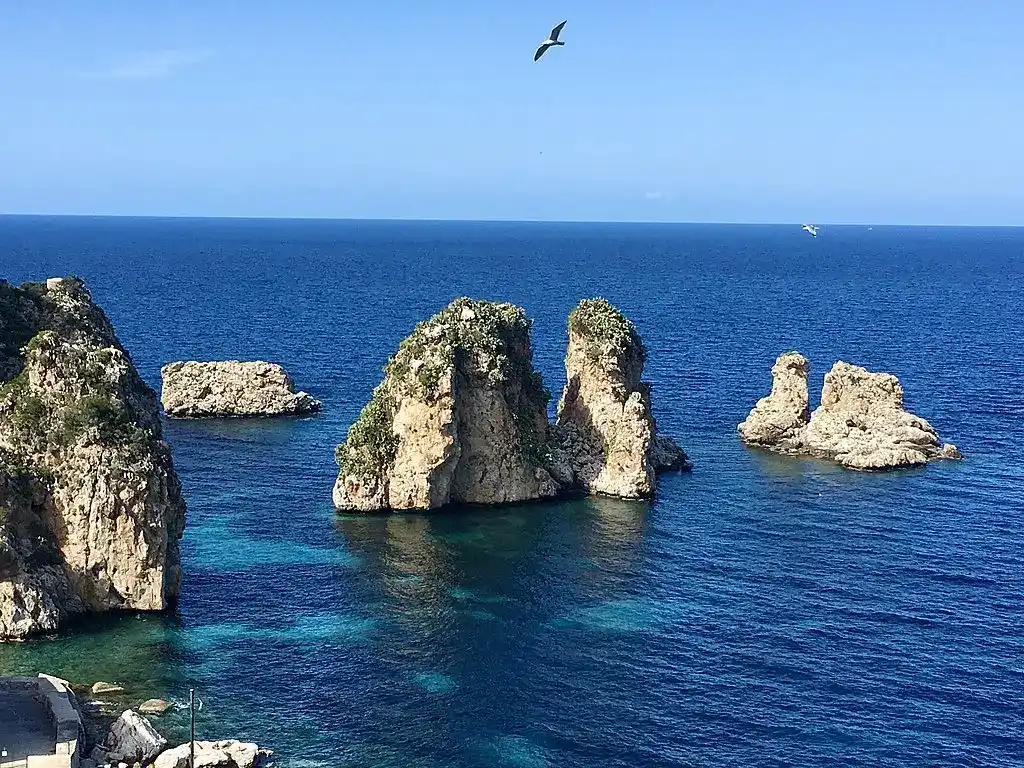
3. Faraglioni
The Faraglioni are iconic rock formations near the island, rising majestically from the cobalt waters of the Tyrrhenian Sea. These limestone pillars, sculpted by millennia of natural forces, stand as silent sentinels against the horizon. The first Faraglione, known as “Stella,” displays a distinct arch where waves surge through, while the second, “Mezzo,” stands tall and solitary. The third, “Scopolo,” juts dramatically from the sea, adorned with lush vegetation. These formations, etched with history and mythology, create a dramatic tableau against the sky, evoking a sense of awe and wonder for all who gaze upon them from land or sea.
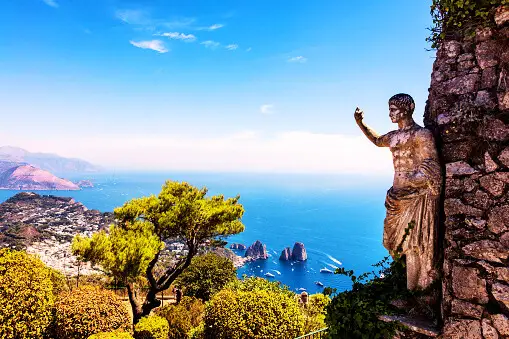
4. Anacapri
The second town on the island, located at a higher elevation than Capri town. Anacapri is less crowded and offers a more laid-back atmosphere. From here, you can take a chairlift to Monte Solaro for fantastic views.
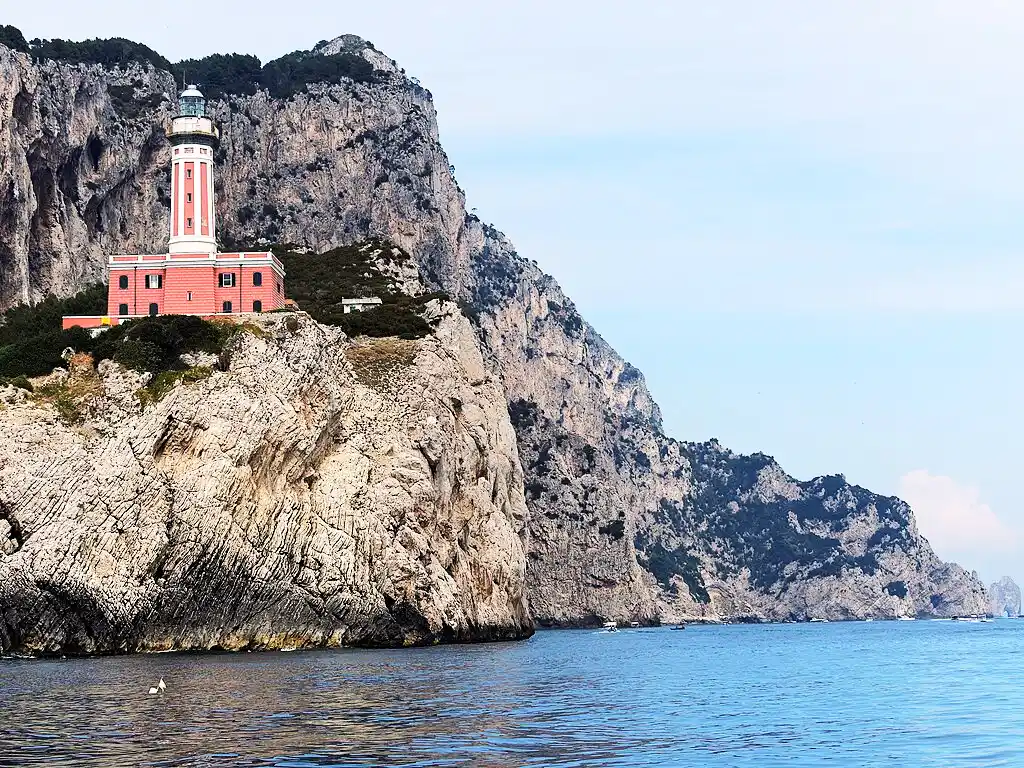
5. Punta Carena
The Punta Carina Lighthouse, constructed in 1862, has become a beloved tourist destination in Capri, drawing visitors eager to witness its enchanting sunset views and panoramic vistas of the surrounding island and coast. The tower, spanning 46 m, stands proudly on rocky cliffs, showcasing its charming octagonal shape and two-story brick construction. Painted in white with distinctive red vertical stripes, it adds a glowing touch to the scenic natural features and bodies of water surrounding it, attracting tourists from all directions.

6. Capri Town
The main town on the island is charming, with narrow streets, elegant boutiques, and lively piazzas. Explore the fashionable shops, dine in local restaurants, and soak up the island’s atmosphere.
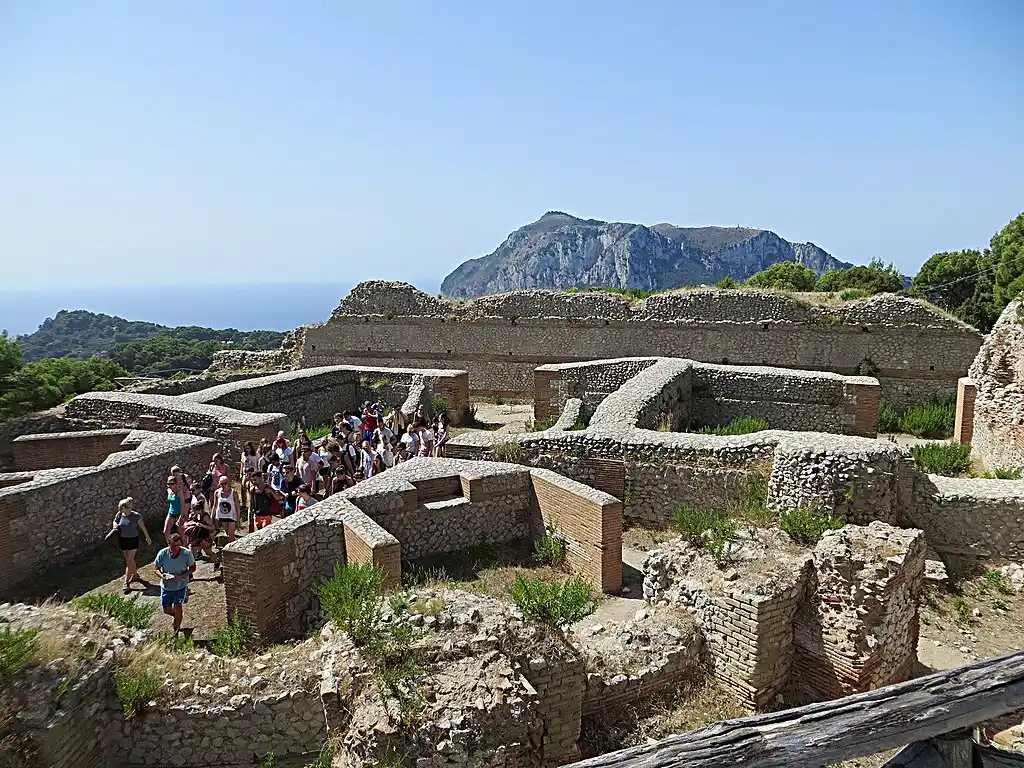
7. Villa Jovis
The Villa Jovis compound was formally opened in the year 1937, subsequent to excavation endeavors led by the archaeologist Amadeo Maiuri, adhering meticulously to scientific standards. Situated within the confines of the Villa Jovis premises is the diminutive Church of Santa Maria del Soccorso. Adjacent to the church, in the area facing it, stands a Madonna statue that is observable from the sea beneath.
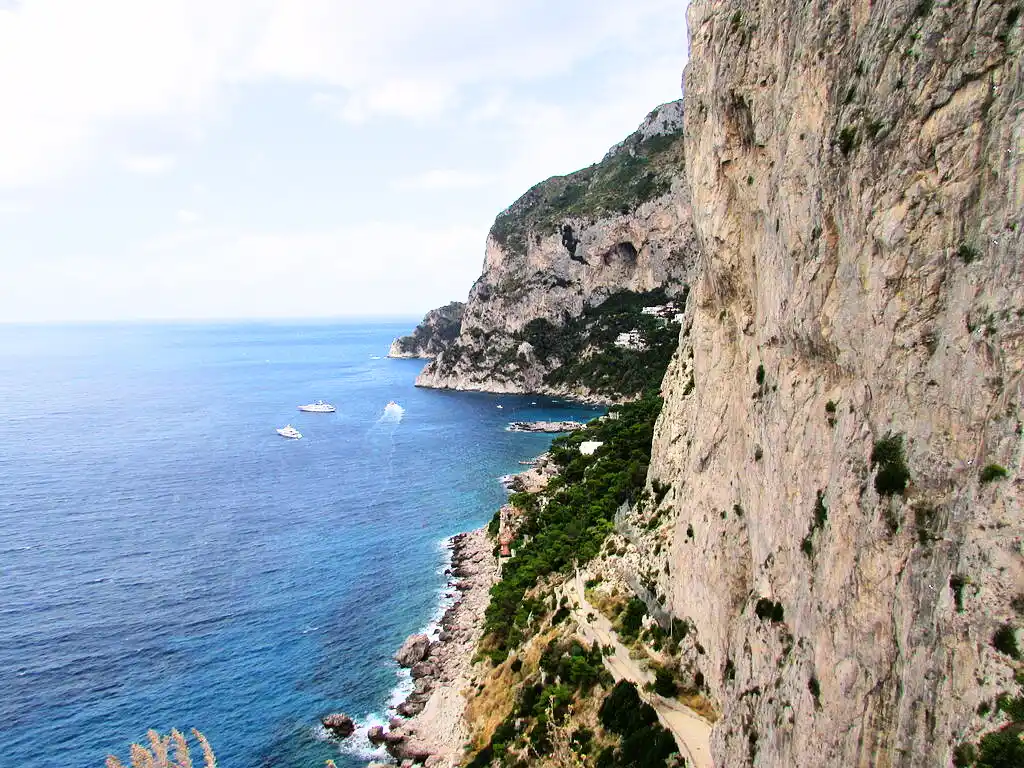
8. Marina Piccola
Located along the southern coast of the island, Marina Piccola stands as a haven of tranquility and charm. Embraced by rugged cliffs, this bay offers a serene ambiance. The crystal-clear waters lap gently against pebbled shores, extending an invitation for leisurely dips. Boats sway softly atop the sea’s surface, a testament to the area’s strong maritime heritage. The landscape, adorned with dramatic limestone formations, envelops the bay in a protective embrace. With its unpretentious allure, Marina Piccola provides a serene escape, making it a sought-after destination for travelers in search of respite from urban life. This unassuming charm perfectly complements Capri’s diverse coastal offerings.
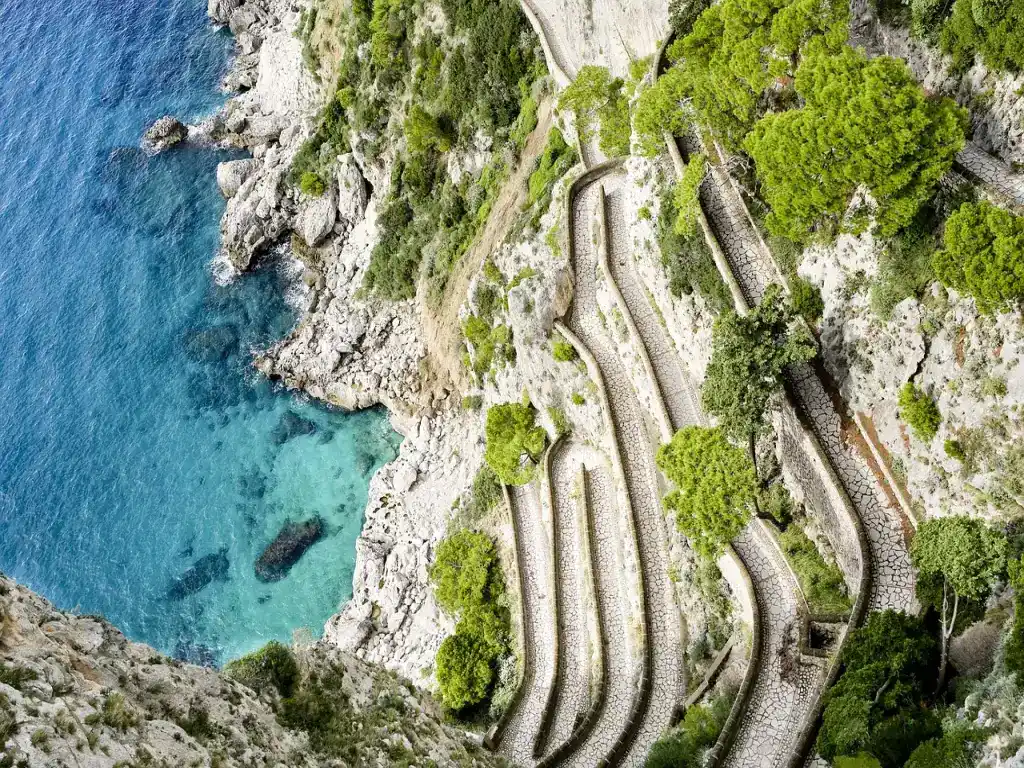
9. Via Krupp
Via Krupp is a striking serpentine pathway on the island. Winding its way from the Gardens of Augustus to the Marina Piccola, this unique walkway offers panoramic views of the Tyrrhenian Sea. Designed by the engineer Friedrich Alfred Krupp, the path’s intricate layout adds a touch of sophistication to the coastal landscape. Its sinuous route enhances the experience, revealing glimpses of azure waters at every turn. While it remains temporarily closed due to preservation efforts, Via Krupp stands as a testament to human ingenuity harmonizing with natural beauty, making it an unforgettable feature of Capri’s allure.
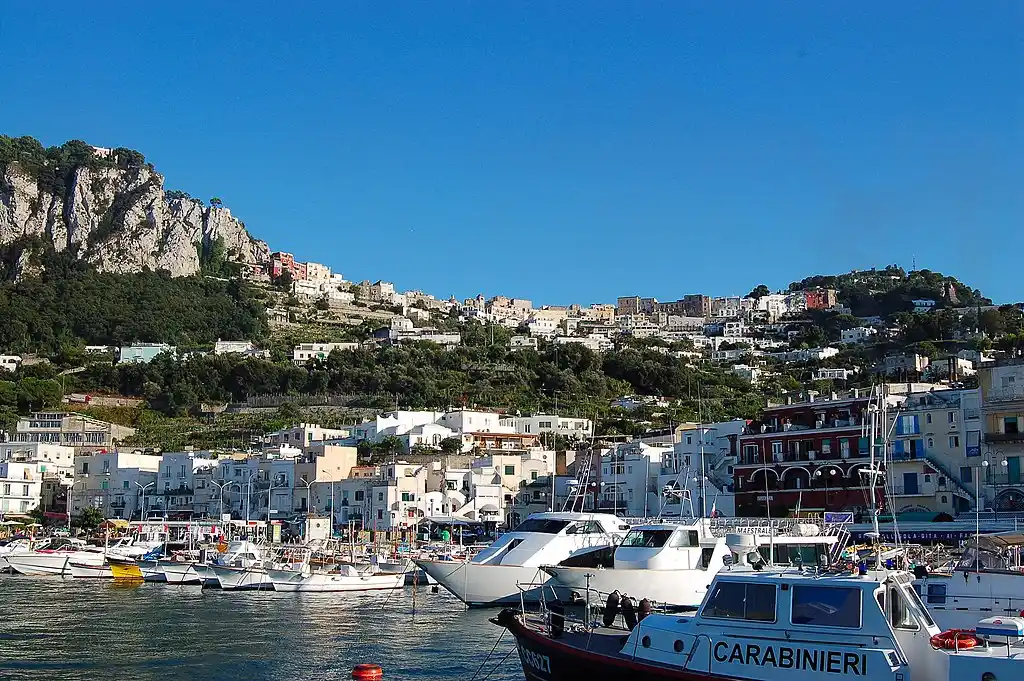
10. Marina Grande
Take a boat tour around the island to see its coastline, caves, and rock formations up close. You can also explore the nearby Amalfi Coast and Sorrento.
Remember that Capri can get crowded during peak tourist seasons, so it’s a good idea to plan your visit accordingly. Enjoy the beautiful island and all it has to offer!
Hotels in Capri
Hotels in the island are comparatively affordable compared to other tourist spots. Here are our top picks-
Restaurants in Capri
Events in the Island
1. Tango Festival (held annually every June since 2007)
2. Hollywood International Film Festival (takes place each year in late December or early January since 1995)
3. Celebration of San Costanzo (honoring the patron saint) – May 14
4. International Folklore Festival (held in Anacapri during August)
5. Anacapri Harvest Festival (known as Settembrata Anacaprese) – September
6. Art Film Festival (occurring annually in April since 2006)
7. Enigma Capri Award Ceremony
8. Festival of Sant’Antonio (commemorating the patron saint of Anacapri) – June 13
9. Gulf of Capri Marathon
10. Villa San Michele Events
11. Faraglioni Prize Ceremony
12. San Michele Award Ceremony
When to Visit
Optimal times to explore Capri, Italy, are spring (April to June) and early autumn (September to October). These seasons offer mild temperatures, fewer crowds, and vibrant landscapes. Spring boasts blooming flora, pleasant weather for outdoor activities, and lively local events. Fall presents warm waters for swimming, comfortable weather, and the harvest season. Summer (July and August) is busy but provides excellent beach days. Winter is quieter, with cooler temperatures, making it ideal for those seeking a peaceful retreat. Choose a time that aligns with your preferences, whether it’s vibrant activity or a more tranquil experience amidst the island’s natural beauty.
Learn about other places from Southern Europe.
